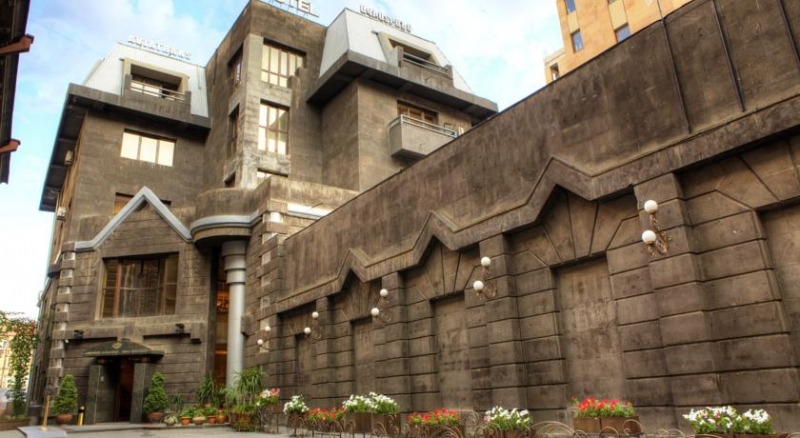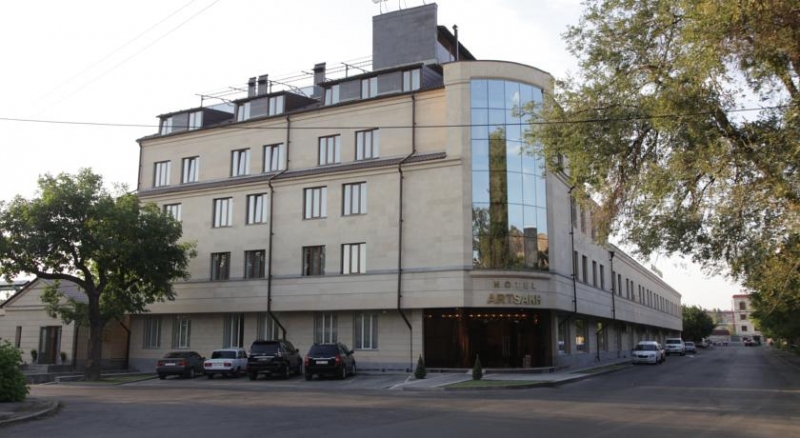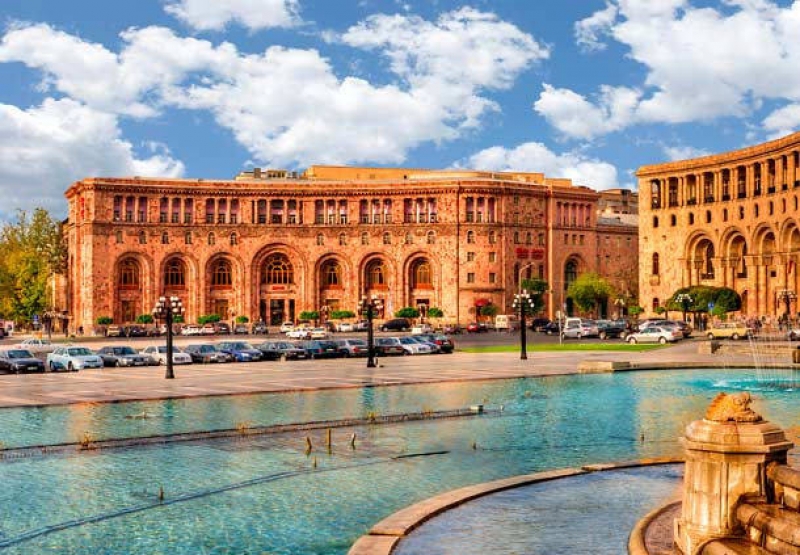Aviatrans Hotel
Artsakh Hotel
Armenian Royal Palace
Armenia Marriott Hotel
Ararat Hotel
Ani Plaza Hotel
14th Floor Hotel
UNESCO Cultural Heritage
To be included on the World Heritage List, sites must be of outstanding universal value and meet at least one out of ten selection criteria.
These criteria are explained in the Operational Guidelines for the Implementation of the World Heritage Convention which, besides the text of the Convention, is the main working tool on World Heritage. The criteria are regularly revised by the Committee to reflect the evolution of the World Heritage concept itself.
Until the end of 2004, World Heritage sites were selected on the basis of six cultural and four natural criteria. With the adoption of the revised Operational Guidelines for the Implementation of the World Heritage Convention, only one set of ten criteria exists;
* to represent a masterpiece of human creative genius;
* to be an outstanding example of a type of building, architectural or technological ensemble or landscape which illustrates (a) significant stage(s) in human history;
* to be directly or tangibly associated with events or living traditions, with ideas, or with beliefs, with artistic and literary works of outstanding universal significance. (The Committee considers that this criterion should preferably be used in conjunction with other criteria);
*to contain superlative natural phenomena or areas of exceptional natural beauty and aesthetic importance.
Properties inscribed on the World Heritage List
Cathedral and Churches of Echmiatsin and the Archaeological Site of Zvartnots
The cathedral and churches of Echmiatsin and the archaeological remains at Zvartnots graphically illustrate the evolution and development of the Armenian central-domed cross-hall type of church, which exerted a profound influence on architectural and artistic development in the region.
Criterion (ii): The developments in ecclesiastical architecture represented in an outstanding manner by the churches atEchmiatsin and the archaeological site of Zvartnots had a profound influence on church design over a wide region.
Criterion (iii): The churches at Echmiatsin and the archaeological site of Zvartnots vividly depict both the spirituality and the innovatory artistic achievement of the Armenian Church from its foundation.
Monasteries of Haghpat and Sanahin
These two Byzantine monasteries in the Tumanian region from the period of prosperity during the Kiurikian dynasty (10th to 13th century) were important centres of learning. Sanahin was renowned for its school of illuminators and calligraphers. The two monastic complexes represent the highest flowering of Armenian religious architecture, whose unique style developed from a blending of elements of Byzantine ecclesiastical architecture and the traditional vernacular architecture of the Caucasian region.
Criterion (ii): The developments in ecclesiastical architecture represented in an outstanding manner by the churches at Echmiatsin and the archaeological site of Zvartnots had a profound influence on church design over a wide region.
Criterion (iv): It is of outstanding universal value and an exceptional example of ecclesiastical architecture that developed in Armenia in the 10th to 13th centuries which is unique by virtue of its blending of elements of both Byzantine church architecture and the traditional vernacular building style of this region.
Monastery of Geghard and the Upper Azat Valley
The monastery of Geghard and the Upper Azat Valley contains a number of churches and tombs, most of them cut into the living rock, which illustrate Armenian medieval architecture at its highest point.The monuments included in the property are dated from the 4th to the 13th century. At the early period, the Monastery was called Ayrivank (Monastery in the Cave) because of its rock-cut construction.The monastery was founded, according to tradition by St. Gregory the Illuminator, and was built following the adoption of Christianity as a state religion in Armenia (beginning of the 4th century AD). The monastery of Geghard is a renowned ecclesiastical and cultural centre of medieval Armenia, where a school, scriptorium, library and many rock-cut dwelling cells for clergymen could be found in addition to the religious constructions.
Criterion (ii): The Monastery of Geghard, with its remarkable rock-cut churches and tombs, is an exceptionally well preserved and complete example of medieval Armenian monastic architecture and decorative art, with many innovatory features which had a profound influence on subsequent developments in the region.
Yerevan
Yerevan, city of the old and new...
''The city of secret love.
It is quite interesting to walk around in Yerevan. Everywhere there are young couples trying to get some privacy, in the park and at benches around the city. We were told that in Armenia the youth stay with their parents until they get married.
Also the places they live don’t have that much privacy, so in order to be alone with their sweetheart they need to seek the privacy of parks or other hidden places in the city. This has been one of the things we have experienced a lot here.''
Yerevan is the largest city and capital of Armenia. It is situated along the Hrazdan River, which is not navigable, on the Ararat Plain. It is a leading industrial, cultural, and scientific centre in the Caucasus region. It is also at the heart of an extensive rail network and is a major trading centre for agricultural products. In addition, industries in the city produce metals, machine tools, electrical equipment, chemicals, textiles, and food products.
Educational and cultural facilities in Yerevan include universities, the Armenian Academy of Sciences, a state museum, and several libraries. The largest repository of Armenian manuscripts, and indeed one of the biggest repositories of manuscripts in the world, is the Matenadaran.
Zvartnots International Airport serves Yerevan.
Archaeological evidence indicates that a military fortress called Erebuni stood on Yerevan's site as far back as the 8th century BC. Since then the site has been strategically important as a crossroads for the caravan routes passing between Europe and India. It has been called Yerevan since at least the 7th century A.D., when it was the capital of Armenia under Persian rule.
Due to its strategic significance, Yerevan was constantly fought over and it passed back and forth between the dominion of Persia and the Ottomans for centuries. In 1827 it was taken by Russia and formally ceded by the Persians in 1828. After the 1917 Russian revolution it enjoyed three years as the capital of independent Armenia, and in 1920 became the capital of the newly formed Armenian Soviet Socialist Republic, a territory of the Soviet Union. With the collapse of the Soviet Union, Yerevan became the capital of the independent Republic of Armenia in 1991.
The city of Yerevan preserves little of its early history in a form of interest to casual visitors. Behind the anonymous Soviet facades, however, a rich and complex life took place and still does, in the bak (courtyard) or in private apartments far better furnished -- with books, musical instruments, art, and hospitality - than 70 years of official culture or a decade of grim poverty would suggest.










